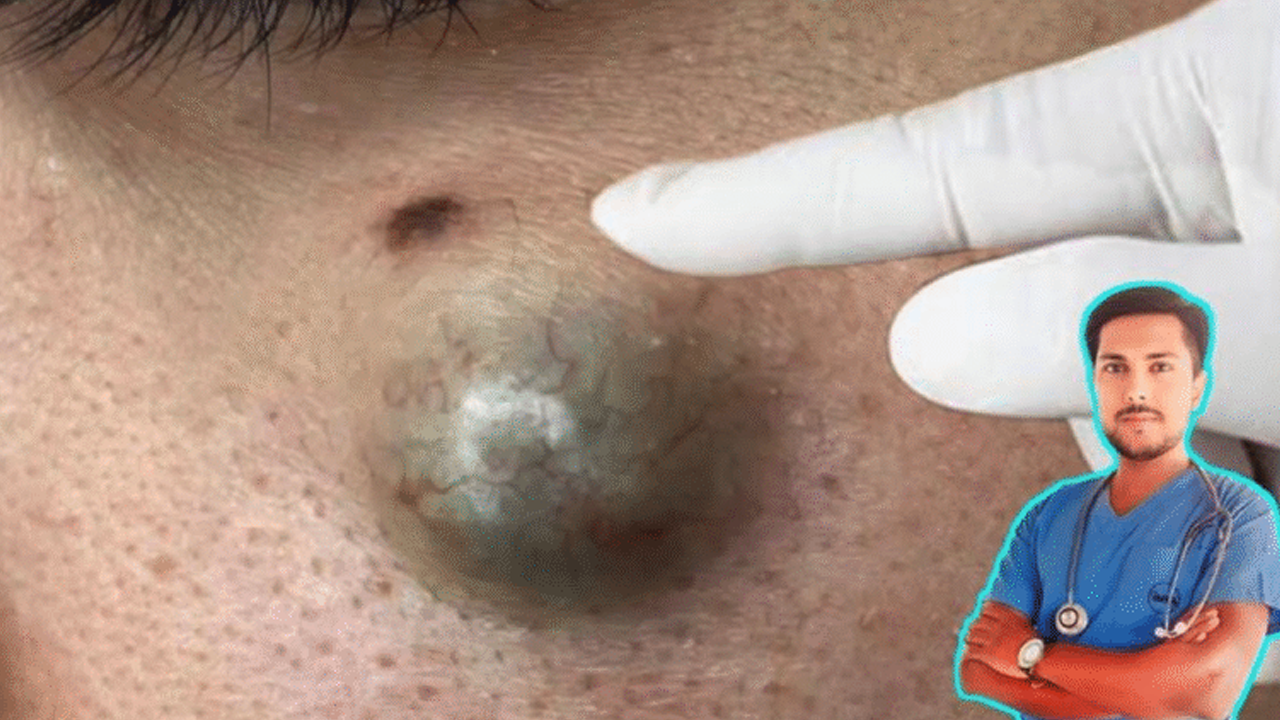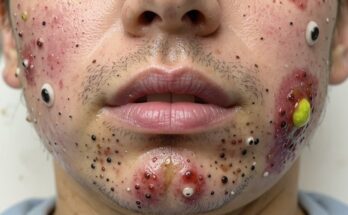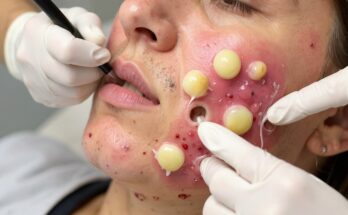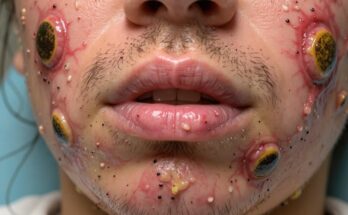Understanding and Treating Cysts: A Comprehensive Guide
This blog post delves into the fascinating world of cysts, exploring their causes, diagnosis, treatment, and aftercare. We’ll dissect the process of cyst removal, providing a detailed, step-by-step explanation accessible to everyone.
What Exactly is a Cyst?
A cyst is essentially a sac-like structure within body tissue, filled with fluid, pus, or other substances. Think of it as a small, enclosed pocket. Several types of cysts exist, each with unique characteristics and causes. The most common include:
Common Types of Cysts:
- Epidermoid (Sebaceous) Cysts: These develop when skin cells or keratin become trapped beneath the skin’s surface, often due to blocked hair follicles or skin trauma. They frequently appear on the face, neck, and torso.
- Pilonidal Cysts: Located near the tailbone, these cysts often result from ingrown hairs or sustained pressure on the area. Individuals who sit for prolonged periods or have excessive body hair are at increased risk.
- Ovarian Cysts: Found within the ovaries, these cysts are more prevalent in women and can stem from hormonal imbalances, pregnancy complications, or conditions such as endometriosis. Symptoms can include pelvic pain, bloating, and irregular menstrual cycles.
Diagnosing Cysts: Identifying the Culprit
Accurate diagnosis is paramount in determining the appropriate treatment for a cyst. A healthcare professional typically employs the following methods:
Diagnostic Techniques:
- Physical Examination: A thorough examination by a doctor provides initial insights into the cyst’s size, location, and potential underlying causes.
- Imaging Techniques: Ultrasound or MRI scans can offer detailed images, revealing the cyst’s size, depth, and relationship to surrounding structures. This is particularly valuable for deeper or internal cysts.
- Biopsy: In rare instances, a biopsy may be necessary to rule out malignancy.
Cyst Removal: A Detailed Procedure
Surgical removal is often the preferred method for persistent or problematic cysts. Here’s a breakdown of the process:
The Surgical Cyst Removal Process:
- Consultation and Assessment: The initial step involves a comprehensive evaluation of the cyst, considering its size, location, and any associated symptoms.
- Preparation and Sterilization: The area surrounding the cyst is meticulously cleaned and sterilized to minimize the risk of infection. Local anesthesia is administered to numb the area, ensuring patient comfort throughout the procedure.
- Precise Incision: A small, precise incision is carefully made over the cyst to gain access to its contents.
- Complete Cyst Extraction: The entire cyst sac, or capsule, is carefully removed. This crucial step is essential in preventing recurrence, as leaving behind any portion of the sac can lead to regrowth.
- Wound Closure and Dressing: The incision is closed using sutures (stitches), which may be dissolvable or require later removal. A sterile dressing is then applied to protect the wound.
- Post-Operative Care: Aftercare instructions typically include keeping the area clean and dry, applying any prescribed ointments, and monitoring for signs of infection. A follow-up appointment is scheduled to monitor healing progress and remove stitches if necessary.
Non-Surgical Cyst Treatment Options
In some cases, non-surgical approaches may be suitable, depending on the type and size of the cyst:
Alternative Treatment Methods:
- Warm Compresses: Applying warm compresses can sometimes help drain small, non-infected cysts.
- Steroid Injections: Steroid injections can reduce inflammation and shrink the cyst’s size.
- Antibiotics: If a cyst is infected, antibiotics are prescribed to combat the infection.
- Observation: For small, asymptomatic cysts, observation may be an appropriate course of action.
When to Seek Medical Attention
While many cysts are harmless, certain signs warrant immediate medical attention:
Warning Signs:
- Pain, redness, or warmth around the cyst: These could indicate infection.
- Rapid cyst growth or changes in appearance: Any significant change requires prompt evaluation.
- Fever or other systemic symptoms: These suggest a more serious underlying problem.
By understanding the nature of cysts and their treatment options, individuals can make informed decisions regarding their health and seek appropriate medical care when necessary. Remember, this information is for educational purposes only and should not substitute professional medical advice. Always consult a healthcare professional for diagnosis and treatment.











